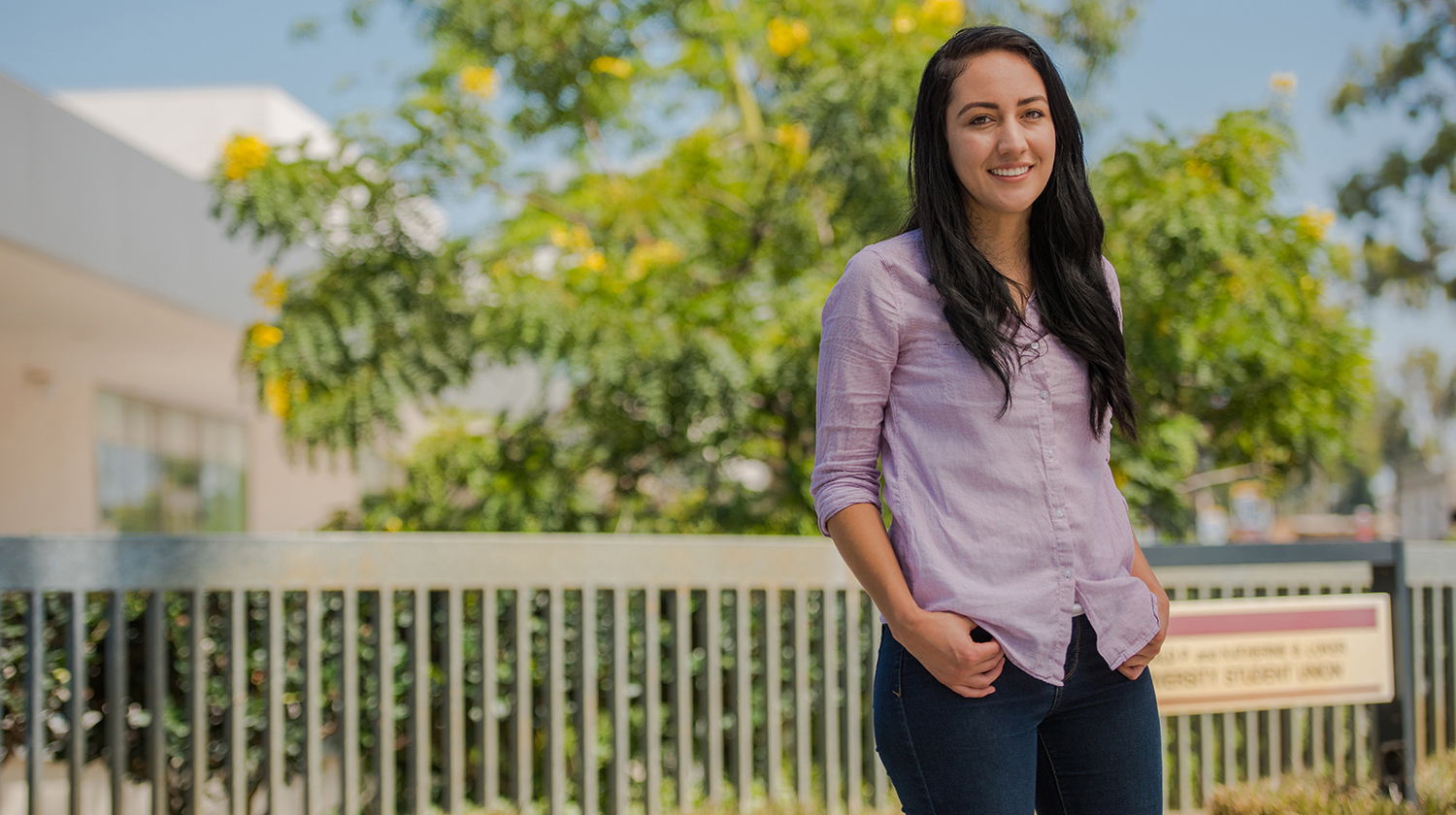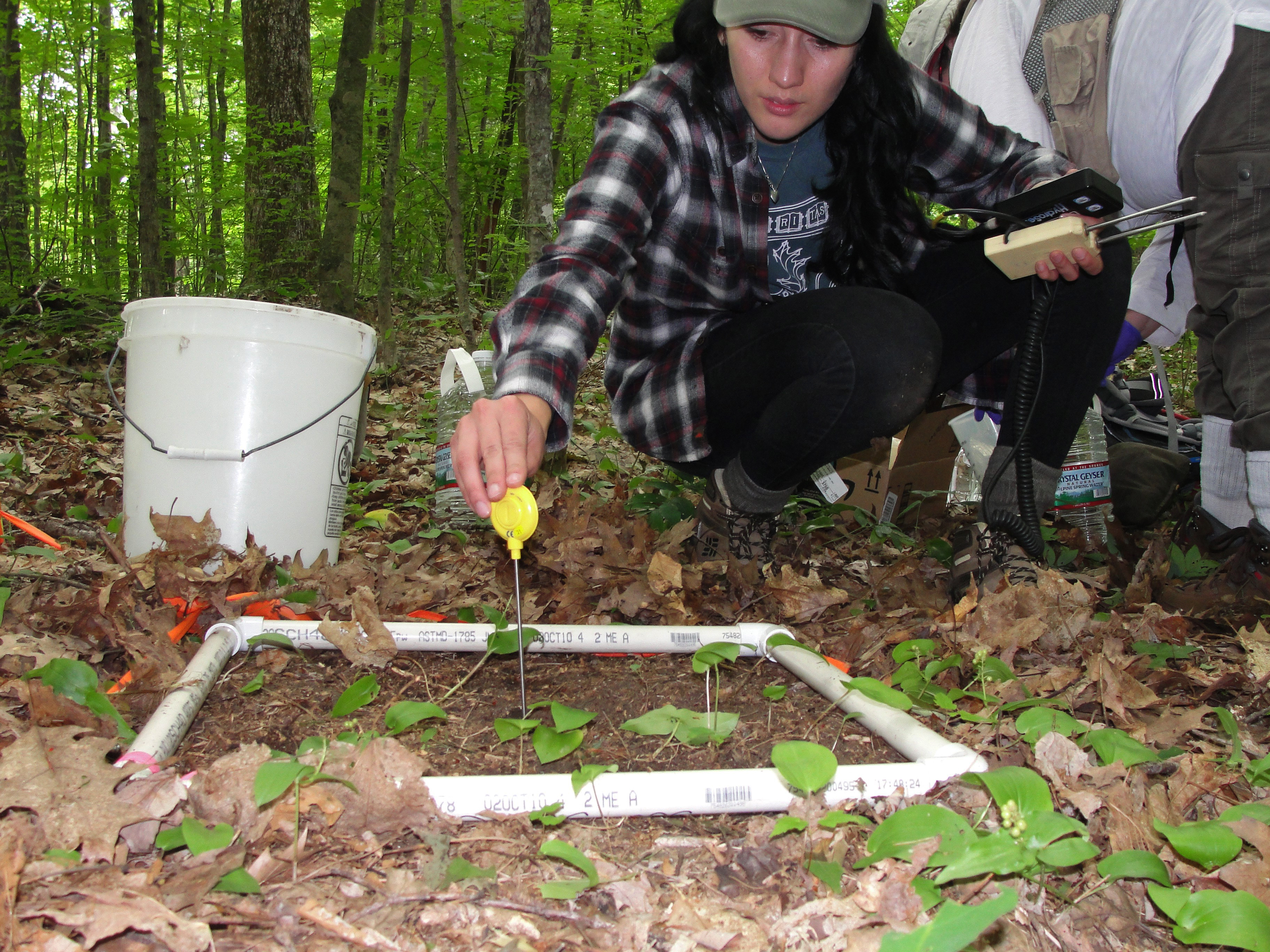 It may have been brought to the United States from Europe in the 1860s for its flavor, but garlic mustard, a member of the Brassicaceae plant family, is now an invasive species in the forests of North America that is negatively impacting native flora and fauna.
It may have been brought to the United States from Europe in the 1860s for its flavor, but garlic mustard, a member of the Brassicaceae plant family, is now an invasive species in the forests of North America that is negatively impacting native flora and fauna.
To help discover ways to eradicate the intrusive plant, California State University, Dominguez Hills (CSUDH) biology student Karina Martinez spent the first 11 weeks of her summer in Harvard Forest, a 4,000-acre ecological research site and outdoor laboratory that has been administered by Harvard University since 1988. Her research focused on if the “Eurasian invasive duo,” garlic mustard and exotic earthworms, work in tandem to impact native plant diversity.
“My work was part of an eradication experiment on garlic mustard, which releases toxins into the soil. I wanted to see if there was a relationship between garlic mustard density, earthworm biomass, and plant diversity,” said Martinez. ”I conducted a plant census and collected earthworms within three treatments: un-invaded (no garlic mustard present); invaded control (garlic mustard present); and pulled (garlic mustard hand-pulled annually).”

The Harvard Forest program enables students like Martinez to work with scientists, other students, and collaborators to explore topics ranging from conservation and environmental change, to land-use history and the effects of interactions between humans and the forest. Martinez applied for the program through the National Science Foundation.
Exotic earthworms, which were introduced in the U.S. in the 1700s, decrease native plant diversity by increasing litter decomposition in the soil, which increases the availability of nutrients. This is beneficial to invasive plants, like garlic mustard, that need resources such as water, light, and nutrients to settle in the soil, according to Martinez. Studying the relationship between such above- and below- ground invasive communities not only help researchers better understand their effect on native flora, but also enables land managers to improve their eradication methods.
Martinez’s research has helped advance the overall understanding of these intrusive species.
“My overall goal was to see if there was a relationship; if they were both working together to impact native plant diversity, and that’s what I found,” said Martinez, who presented her research at a symposium for Harvard Forest staff and the other student researchers. “Earthworm biomass was highest in garlic mustard invaded plots and plant diversity was lowest in plots with high earthworm biomass.”
Martinez plans to attend graduate school after she graduates from CSUDH in fall 2017.
“Over the next few weeks I will start approaching professors to see if I can volunteer in their laboratories, or just go over and have a look at their labs to find out what they are working on,” she said. “There is one professor at UC Irvine whose work interests me. She is working on plant and pollinator interactions. Sounds like a perfect fit for me.”